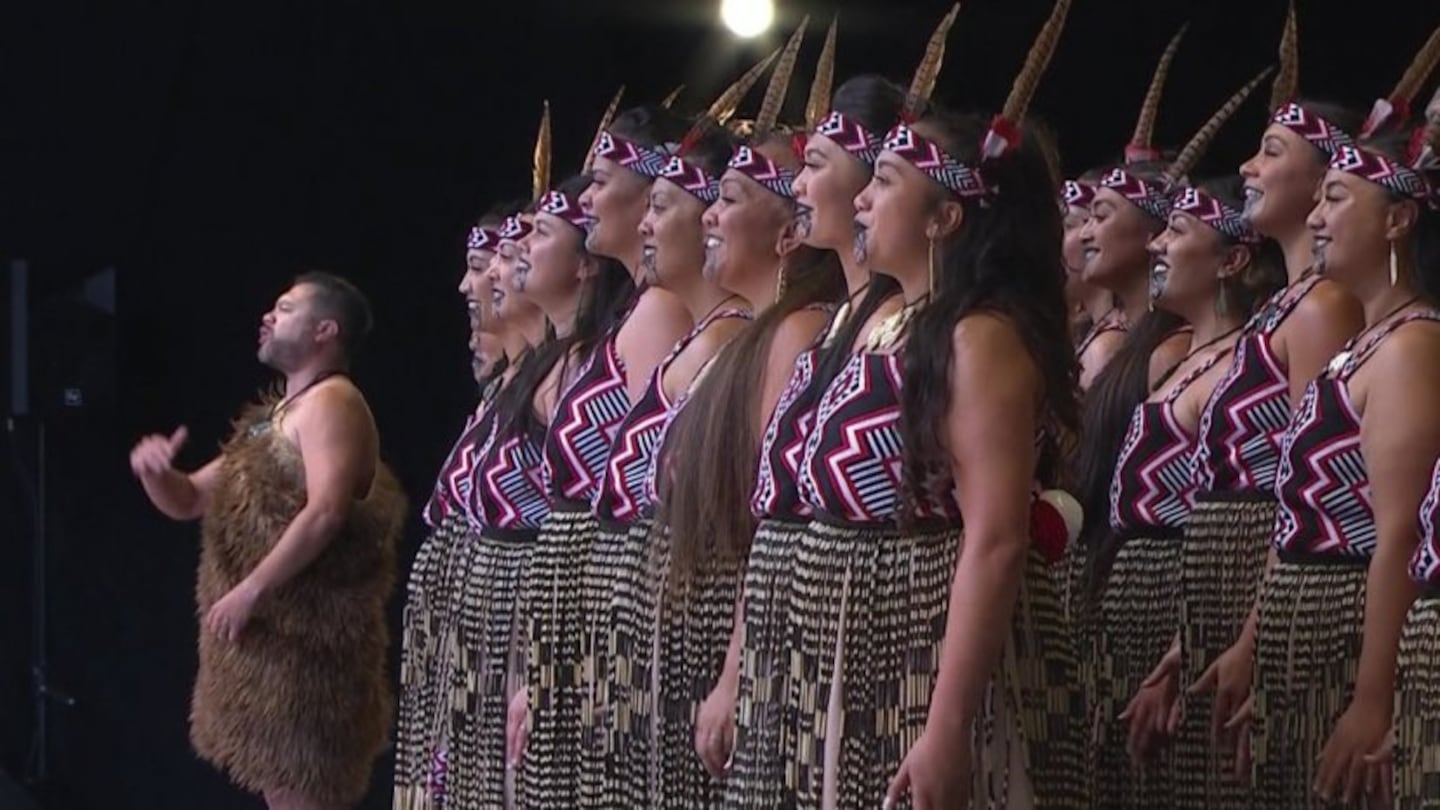He's a Māori fashion designer with creations featured on catwalks throughout Europe – from London to Paris Fashion Week, even British Vogue Magazine.
But back home in Aotearoa, Kharl WiRepa has been part of designing the kākahu for Te Kapa Haka o Te Whānau-ā-Apanui, the 2023 champions of Te Matatini.
A descendant of Te Whānau–ā-Apanui himself, as well as Te Arawa and Tainui, to be part of the entire behind-the-scenes team (composers, kaiwera etc) that helped the rōpū succeed gives WiRepa a “sense of pride”.
“There’s a whole tribe, a whole whānau that goes behind the creation of excellence. That’s definitely what Te Whānau-ā-Apanui achieved this year,” he says.
The uniforms were in need of an overall update, having not changed since 1988 though subtle changes were made over the years according to WiRepa.
From the catwalk to Te Matatini's stage.
'It's not theatre'
“This year after consultation with iwi, in particular with Te Reweti Wharepapa, Rikirangi Gage and Vikki Demant, we decided to bring a new colour into the skirt, a beige skirt. It honours the colour of the piupiu because it brings out the colour of the flax where the other colours contrast against the natural fibre,” he says.
“The band from the skirt was moved to the hemline and created new balance. I had some resistance from the iwi making that change but we did that call because it moved so beautifully on stage when you watch the kākahu and you see that band on the bottom.
“That band and that print in our pare and on our tātua are a representation of the unification of the 13 hapū of Te Whānau-ā-Apanui.”
The changes were not to move too far away from the original design and not to bring new ideas to traditional work – “it’s not a theatre show”.
Upgrade, not change
“It’s old haka. We do not go changing what we are tūturu to what our traditions or values are. We stick to the tikanga, the kawa. There’s no changing but we do upgrade.”
He’s incorporated some of his runway fashion design workflows to the making of the kākahu, having made 106 new pieces of clothing in 16 days.
“When we went into this project I knew that we had to go in with full-on tailoring techniques, there was no shortcutting, and we had to create the garments with excellence.
“Each pare (headband) took 12 hours to make,” he says – and it was on two weeks’ notice.
Having experienced rehearsals from the rōpū beforehand, hearing the compositions of the waiata gave WiRepa the drive to make the kākahu of the same levels “of mana as the music and actions”.
As a result, his mahi and the entire team behind Te Whānau-ā-Apanui have become part of the champion squad too.



